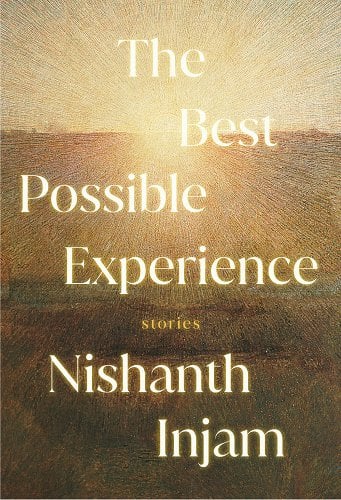[ad_1]
In his debut story collection, The Best Possible Experience, Nishanth Injam creates characters in tight, liminal spaces, between homes and countries, and in transitional phases of life. From a young girl waiting for a gaggle of boys, to a man on a city bus, to a granddaughter and grandfather reflecting on their changing relationship, these people call India home but vary in their relationships to the land. Many are American immigrants, new and settled. Others are firmly rooted in India but dream of a changing future at home or abroad. In all these stories, Injam’s sparse language and attention to detail render the subtlest conflicts with tenderness and care. As a result, these situations feel innately familiar, whether or not we have lived identical lives.
While the whole of Injam’s collection reads very literal, the one foray into speculative material comes in the inaugural story, “The Bus.” A young man returning home and reflecting on the childhood loss of his brother is left helpless watching passenger after passenger disappear into the bathroom. The desperation is palpable, as is the narrator’s ultimate resignation. Said desperation returns in a different context in “The Immigrant,” when recent immigrant Aditya struggles to make ends meet in his first days in the United States. We watch Aditya scrounge for food and shelter, and no details are spared in evoking his quiet suffering. Lines such as “Later in Chipotle: a seven-dollar meal, the sum of five meals back home, food translated into money, if conversion was at the heart if all things pure…” bring to mind a long history of “stranger in a strange land” stories such as ZZ Packer’s “Geese” and the efforts one will go through to erase themselves as burden.
The story with the most emotional range is also the collection’s longest, entitled “Summers of Waiting.” Sita is returning to India to visit her paternal grandfather, called Thatha, who is slowly losing his memory. Through their dual perspectives we see their fraught relationship, burdened with love and continuous grief. Thatha’s perspective shows his loosening grasp of years, with some harrowing moments shining through in their clarity. Injam’s language prevents the story from teetering into unnecessary sentiment, as we see Thatha as both callous and deeply caring, a complex father figure.
Injam writes about and to Indians and the Indian diaspora, and this shines through in both story archetypes and specific detail. Cliché plotlines such as sham green card marriages are given nuance in “The Protocol.” Tea biscuits are treated as culinary luxuries in “The Zamindar’s Watch” and “The Immigrant.” Even the stilted free indirect discourse in “Lunch at Paddy’s” rings true, as the newly immigrated family decide what to feed a visiting white boy and friend of their son’s. Accents are not emphasized but differences in English are. Idioms circumvented, arguments drawn out into the details.
Overall, while “The Best Possible Experience” does not tread new ground in its examinations of immigration and claiming new homelands, it does take a magnifying glass to these experiences and brings them to our technological age. These experiences are not glossed over, and do not focus solely on upper and middle class characters. Rather, we witness a spectrum of social classes, castes, religions, and other identities clashing and interacting in these short stories. Just as there is no one way to be Indian, Injam demonstrates that there is no one way to depict the tenuous relationship between home and migration, or between necessary phases of growth and change.

FICTION
The Best Possible Experience: Stories
By Nishanth Injam
Pantheon Books
Published July 11, 2023

[ad_2]
Source link

